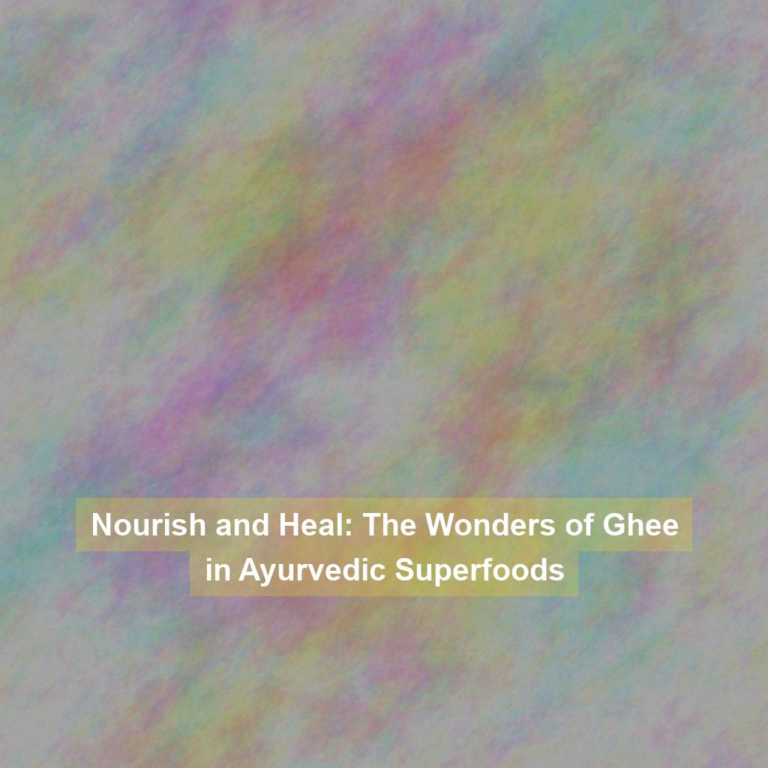Did you know that according to a study published in the Journal of Ayurveda and Integrative Medicine, Ayurvedic dietary principles have been shown to improve overall well-being and promote a balanced lifestyle?
With a focus on the holistic connection between mind, body, and spirit, Ayurveda offers a unique approach to nutrition and health that has been practiced for thousands of years.
By incorporating Ayurvedic principles into your diet, you can discover a harmonious way of nourishing your body and achieving nutritional balance.
So, how exactly can Ayurveda help you achieve this?
Understanding Ayurvedic Doshas
To understand Ayurvedic doshas, it’s essential to grasp their fundamental role in balancing the body and mind. In Ayurveda, doshas are the energies believed to circulate in the body and govern physiological activities. There are three primary doshas: Vata, Pitta, and Kapha.
Vata is associated with movement and is considered the most powerful dosha. Pitta is linked to metabolism and digestion, while Kapha is connected to body structure and stability. Each person has a unique combination of these doshas, which is determined at the time of conception.
Understanding your dominant dosha is crucial as it can provide insights into your physical, mental, and emotional characteristics, helping you make informed lifestyle and dietary choices. For instance, if you have a dominant Vata dosha, you may be prone to anxiety and digestive issues, and thus benefit from warm, nourishing foods and a calming routine.
The Six Tastes in Ayurveda
Exploring the Ayurvedic concept of the six tastes provides valuable insights into the principles of nutritional balance and holistic well-being. According to Ayurveda, each taste – sweet, sour, salty, pungent, bitter, and astringent – has a unique effect on both the body and mind. Understanding and incorporating these tastes into your diet can help maintain balance within the body.
The sweet taste, for example, is known for its nourishing and grounding properties. It promotes strength and satisfies hunger when consumed in moderation. Sour and salty tastes stimulate digestion and can increase appetite. Pungent taste, found in spicy foods, can improve metabolism and circulation. Bitter taste, often found in dark leafy greens, aids in detoxification and can have a cooling effect on the body. Lastly, the astringent taste, found in foods like legumes and certain fruits, can help in toning tissues and reducing inflammation.
Mindful Eating Practices
As you consider incorporating the six tastes into your diet to maintain balance within the body, practicing mindful eating can further enhance your holistic well-being. Mindful eating involves being fully present while consuming your meals, allowing you to appreciate the flavors, textures, and nourishment provided by the food.
To start practicing mindful eating, begin by taking a moment to express gratitude for the meal in front of you. Engage your senses by noticing the colors, aromas, and presentation of the food. As you take each bite, chew slowly and savor the flavors, paying attention to the different tastes and textures.
This intentional approach to eating allows you to better recognize feelings of fullness and satisfaction, preventing overeating. Additionally, mindful eating promotes a deeper connection between your body and the food you consume, fostering a greater awareness of how different foods affect your overall well-being.
Ayurvedic Superfoods for Balance
When seeking nutritional balance through Ayurveda, incorporating specific superfoods can greatly support your journey towards holistic wellness.
Turmeric, with its powerful anti-inflammatory properties, can aid in digestion and support overall gut health. Including turmeric in your diet can help balance all three doshas, promoting harmony within the body.
Additionally, incorporating Ashwagandha, an adaptogenic herb, can help reduce stress and promote relaxation, thereby supporting emotional and mental balance. Its ability to enhance the body’s resilience to stress makes it a valuable addition to your diet.
Furthermore, incorporating ghee, a clarified butter, can support digestion and enhance the absorption of nutrients in the body. Its nourishing properties can help balance the doshas and promote overall well-being.
Lastly, adding triphala, a blend of three fruits, to your diet can aid in detoxification and support healthy digestion. Its cleansing properties can help maintain balance within the body.
Creating Ayurvedic Meal Plans
To create Ayurvedic meal plans that support your well-being, consider incorporating a variety of whole foods and spices tailored to your body’s unique constitution. Start by identifying your dosha, or mind-body type, which could be Vata, Pitta, or Kapha. Each dosha has specific dietary guidelines that can help maintain balance and promote health.
For example, if you have a Vata dosha, focus on warm, cooked foods and grounding spices like ginger and cumin. If you’re a Pitta type, opt for cooling foods such as sweet fruits and leafy greens, and use spices like coriander and fennel. Kapha types may benefit from light, dry foods and warming spices like black pepper and turmeric.
Once you understand your dosha, plan your meals around it. Incorporate fresh, seasonal produce, whole grains, healthy fats, and high-quality proteins. Emphasize mindful eating, savoring each bite, and chewing thoroughly. Consider the timing of your meals as well, aiming for regular mealtimes to support digestion. Additionally, be mindful of food combinations to optimize nutrient absorption and prevent digestive discomfort.
Conclusion
Incorporating Ayurvedic principles into your diet can help you achieve a sense of balance and harmony in your life.
By understanding your dosha and incorporating the six tastes into your meals, you can nourish your body and mind in a holistic way.
Mindful eating practices and the inclusion of Ayurvedic superfoods can further enhance your nutritional balance.
Embrace these principles and create Ayurvedic meal plans to support your overall well-being.







